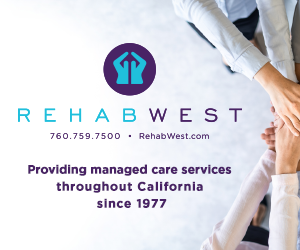Industry Insights
August 28, 2018
Fikes and Rousmaniere: The Best Workers' Comp Claims Teams
- National
- - 0 shares
Workers’ comp claims teams vary in their performance, yet there has been no way to clearly identify what superior performance means and what superior performers do.

Rachel Fikes
Now we have the summary results of a five-year, 1,700-participant survey project to provide answers.
The annual Workers’ Compensation Benchmarking Study, founded in 2013 and published by Rising Medical Solutions, pinpoints what separates the top quarter of claims organizations from the rest.
To date, five study reports have racked up more than 500 pages of text, tables and graphs. In a new white paper, How to Close the Claims Performance Gap, this multi-year data is whittled into the “top three” practices claims that organizations should adopt to join their more successful peers.
Here we discuss one of them.
Best performers focus more on what’s most important
Workers’ compensation claims entail managing a wide array of competencies encompassing legal, medical, workplace, regulatory and psychosocial factors that affect recovery and claims closure rates. Therefore, a first step in comparing performance is to find out what and how claims teams focus on “core competencies.”

Peter Rousmaniere
Since the study’s onset, claims executives have been asked to rank in order of importance the 10 core competencies most vital to successful claims outcomes. Survey participants — the majority of whom work for insurers, third-party administrators and self-administered employers — have consistently ranked medical management, disability/return-to-work (RTW) management and compensability investigations as the top three capabilities most critical to claim outcomes.
Not that other items on the list, including litigation management and claims reserving, are not important competencies. But survey participants ranked them as having a less significant impact on achieving the best claims outcome, with survey participants defining an employee’s return to the same or better pre-injury functional capabilities as the top classification of a “good claims outcome.”
This definition of an optimal outcome reflects a shift away from a reactive culture more focused on legal compliance toward a more proactive, service-oriented approach. The 1,700-plus survey respondents clearly say this is the business they are in, with upward of 1 million compensable, new lost-time claims occurring each year.
However, there are striking stratifications in this “business,” with higher-performing claims organizations outpacing lower performers by factors of five six, and 10, respectively, when it comes to measuring their performance within core competencies, measuring claim outcomes based on evidence-based treatment guidelines and measuring claim outcomes based on evidence-based disability duration guidelines.
The primary reasons that lower performers cite for not measuring performance within core competencies are data/system limitations, unsure how to operationalize and, startlingly, it’s not a business priority.
The study was able to separate high performers from lower performers by ranking respondents by their claims closure ratio. A closure ratio of 75% means that for every three claims closed, four are opened. Organizations with a closure ratio of 100% run a tight ship, closing claims at the same pace they are opening new ones.
Claims experts agree that a claims ratio of 101% or higher is a reliable sign that the organization is managing claims outcomes effectively.
For claims executives and system designers, the message is clear: Focus on and measure key core competencies more to succeed.
In addition to core competencies, we have identified two more critical practices that claims organizations should implement to join the elite ranks. With only 24% of industry payers achieving top-performer status, this means the remaining 76% need to take action or risk falling further behind.
To learn about these two critical practices, as well as viable implementation strategies, read our entire white paper, freely available here.
Rachel Fikes is vice president and program director of Rising Medical Solutions’ annual Workers’ Compensation Benchmarking Study. Peter Rousmaniere is a journalist and consultant in the field of risk management, with a special focus on work injury risk. This post is reprinted by permission from InsuranceThoughtLeadership.com.
Advertisements
Columns
- Moore: Reciprocity Adds Authority 04/23/24
- Montgomery: Sedgwick Tries PPO Discount for Med-Legal (Again) 04/19/24
- Kamin: More Policy Exclusions Would Reduce Losses 04/18/24
- Phillips: It's All Settled 04/17/24
- Snyder: Public Benefit Rules Have Changed, but It Might Not Make a Difference 04/12/24
- Headrick: Clearing Up a Common Misconception 04/11/24
- Snyder: Litigation Guidelines Should Define Four Settlement Triggers 04/10/24
- Kirsch: Depositions of Comp Carrier Employees After Intervening in Third-Party Actions 04/09/24
- Wilson and Bennett: Could AI Have Prevented the Opioid Crisis in Workers' Comp? 04/08/24
- Moore: Pandemic Effect Over in March 2027. Really? 04/05/24
- Geaney: A Brief History of Our State's Workers' Compensation Act 04/04/24
- Kamin and Larres: Significant Panel Decision Clarifies Recon Confusion 04/03/24
- Gelman: Exposed to 'Forever Chemicals' 04/02/24
- Montgomery: Cyberattack Delays Payment of San Francisco Bills 04/01/24
- Young: Indoor Heat Regs in Turmoil 03/29/24
- Langham: Shootings and Compensability 03/27/24
- Geaney: Third-Party Liens Not Always Due Right Away 03/26/24
- Larres: State Supreme Court Denies Review of Our Appellate Win 03/25/24
- Moore: Recordkeeping and Your Remote Premium Auditor 03/22/24
- Switzer: Important Change Coming Soon 03/21/24
Now Trending
- Workers' Compensation News
-
Calif.
Chiropractor Sentenced to More Than
54 Years, Fined…
Posted on Apr 16, 2024
-
Calif. Court
Upholds Summary Dismissal of
Worker's Claims for Retaliation,…
Posted on Apr 17, 2024
-
Calif. WCIRB
Approves Recommendation for 0.9%
Rate…
Posted on Apr 18, 2024
-
Calif. Committee
Passes Bill to Expand 4850…
Posted on Apr 22, 2024
-
Calif. DWC Updates
Time-of-Hire…
Posted on Apr 23, 2024
-
Calif. Committee
Passes Bill to Revise Poster…
Posted on Apr 19, 2024
-
Calif. Cal/OSHA
Cites Construction Company $371,100
for Fatal Trench…
Posted on Apr 22, 2024
-
Ore. Worker Can
Request Examination if Carrier
Supports Claim Denial With IME…
Posted on Apr 22, 2024
-
Fla. State Joins
Texas in Prohibiting Local
Workplace Safety…
Posted on Apr 16, 2024Joe Paduda says: “All of us in the Worker’s Comp. industry should push to improve…”
-
Minn. Supreme
Court Upholds Award to Social
Worker for…
Posted on Apr 19, 2024
Jobs
Upcoming Events
May 5-8, 2024
Risk World
Amplify Your Impact There’s no limit to what you can achieve when you join the global risk managem …
May 13-15, 2024
NCCI's Annual Insights Symposi
Join us May 13–15, 2024, for NCCI's Annual Insights Symposium (AIS) 2024, the industry’s premier e …
May 13-14, 2024
CSIA Announces the 2024 Annual
The Board of Managers is excited to announce that the CSIA 2024 Annual Meeting and Educational Con …
Social Media Links
c/o Business Insurance Holdings, Inc.
Greenwich, CT 06836





No Comments
Log in to post a comment